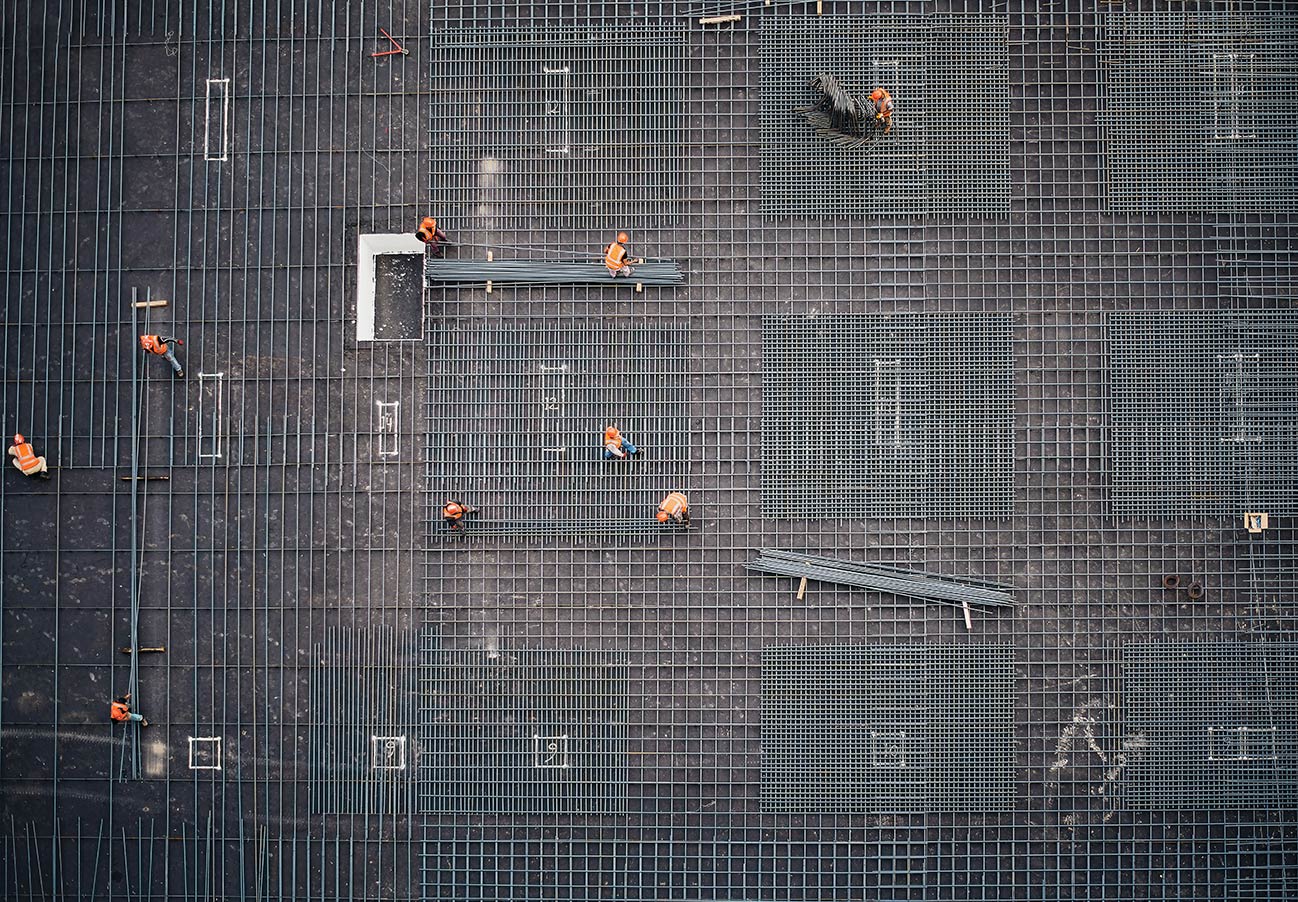Carrots, Sticks, and Low-Carbon Buildings
To help designers take on global warming, we need to think about psychology, not just technology, says Arup's Fiona Cousins.

Within the past year, a number of architecture firms and allied organizations have formally declared a climate emergency and pledged to take action. But what should this action involve, and how likely is it to happen at the scale and speed required to prevent the worst outcomes of global warming? In this interview series, the League presents different perspectives on where architecture currently stands with regard to climate action, where it needs to go, and how it might get there.
Arup’s Fiona Cousins, a mechanical engineer by training, has spent decades working to advance the green building movement. The League’s Sarah Wesseler spoke with her about the obstacles and opportunities designers face as they confront global warming.
*
The climate-related events we’re seeing around the world—the Australian wildfires earlier this year, for one—are pretty terrifying, as is the messaging coming out of the scientific community. How well do you think the AEC industry as a whole is responding?
I think the AEC industry is beginning to respond, but, as you say, the messaging is pretty dire. And it probably needs to be. Some of us have been working in this space for a long time, and it’s been really hard to get anybody’s attention—and that goes for people in the industry as well as clients. It’s been very difficult to convince people that carbon emissions from buildings are important. So while the stories are terrifying, this might be the only way to get the kind of action we need.

January 2020 wildfire in Canberra, Australia. Credit: Nick-D via CC 4.0
A second thing to keep in mind is that it’s been well known for decades that buildings are responsible for 40% of global emissions. But what has never been clear is who owns the responsibility for making that number smaller. Architects and engineers who are interested in this spend a lot of time looking for clients who are also interested so that we can align our activity. And we’ve made brilliant progress in getting good carbon and energy performance on a very, very tiny fraction of our buildings—but we need to be able to make changes in a much more full-scaled way, and in both existing and new buildings.
But whose responsibility is this? Is it the engineers’ responsibility? Because the owners tend to point at the engineers and say, “If you’d pushed me harder, I’d have done it.” The engineers tend to point at the code and governance and say, “If you made it part of the rules, then it would be much easier for us to get owners to do it.” And the government tends to point at the owners and say, “Well, we govern by consent of the governed, and sometimes it’s difficult to get you to accept more stringent codes.” So you end up with everybody pushing some portion of the blame off onto other people.
What are some other barriers you see?
Another thing that tends to happen is that anything that’s green tends to get a price tag attached to it, and designers have to then prove a payback.
We probably put ourselves in this situation, because sustainability is one of the few areas where you do get a payback—clients can often quantify energy savings, or water savings, or sewage savings, or whatever it is, if they pursue a more sustainable design.
The problem with this is that there are many, many other benefits associated with better design, and most of them don’t come under the same kind of scrutiny. Typically, if you can’t convince the client that doing things a certain way will make payback work purely on energy savings, for instance, you won’t get to do it, even if it’s clearly a better choice.
The tenor of the conversation with clients tends to be, “We want to do something for sustainability or energy, and it’s going to cost you more,” when actually it should be more like, “We want to do something for sustainability or energy, and we need to look at all the costs and benefits. It might, or might not, cost you a little more up front, but it will save you money on energy in the long run—and it will also support a better quality of life for occupants because there’s more daylight,” for instance.
But people tend to make the argument very reductive. It boils down to, what is the cost of sustainability? And hard-cost benefits weigh too heavily, partially because other benefits can be hard to quantify. For instance, if every employee who works in the building works five minutes longer every day because the design is better, the benefits that will accrue to the tenants throughout the life of the building easily outweigh the money they’ll save on energy. But how do you quantify that?
So do you think the solution is for designers to find different ways to communicate about these issues with their clients?
I don’t think it’s all the responsibility of the designer—which is why I welcome more aggressive media attention around climate change. Owners and users must also demand better performance.
It comes back to the point about split responsibility. The places where we’re beginning to see success are where there’s well-thought out legislation that allows us to change the frame around the way the building is delivered.
It would be easy for designers to internalize the problem and say, “We have to do a better job of communicating.” But actually, the trick is more about convening. It’s about getting groups of people together—people who are able to provide the architect’s point of view, the building occupant’s point of view, the construction point of view, the hard cost point of view … You then get a more coherent story where everyone can actually understand the benefits across the whole of design, construction, and occupancy, and can develop a story that clearly communicates, “Well, it wouldn’t make sense to do anything else, and therefore this is how we’re going to do it.”
Are there other key obstacles that you think are holding designers back?
There is a lack of data. In order to get the most sustainable buildings you have to do quite a lot of work upfront to understand how energy will be used in the building—and this is hard. Energy is intangible, and the way it’s used is not clear to most people. Sometimes people have a particular idea that they believe will save energy, and that gets put that into the mix without full review, even if that particular technique or technology doesn’t really apply to the building at hand.
The right techniques and technologies have to be applied to the right building type so that they’re not only cost-effective, but achieve the desired results for the building’s program, the systems of the building, the way it is constructed, the way that it fits within the city, and so on. I think we don’t know enough about how individual techniques affect different kinds of buildings because of that lack of data, and because of perhaps the lack of technical understanding through the industry.
Another place where we are missing data is in embodied carbon. As energy codes tighten up and buildings become less carbon-intensive in their general operations, much more emphasis is being placed on embodied carbon. That’s another place where there is a huge data gap: what is the embodied energy of the building, what is the carbon that’s in the building when it’s constructed, and how do you reduce it?

Credit: Saad Salim via Unsplash
That’s a pretty significant list of challenges. Where do you see potential solutions coming from?
I’m not sure that there are any “solutions”, but I think we have some clues about where to look: good early-stage planning, integrated design, and raising awareness in the broader culture about both climate change in general and the impact of buildings in particular. Are there other places? I’m sure there are…!
We’ve heard quite a lot about new technology, but from my perspective, it’s not a question of needing new technology; we’ve got plenty of reliable technology. But we don’t always apply it well in buildings, and we haven’t figured out how to properly motivate ourselves to really maximize its impact. We get hung up on cost, we get hung up on complexity, and we can’t see the energy we use.
Another thing that’s proven difficult for people who’ve been in this space for a really long time is that it’s really hard work to maintain your own energy. If every day for the last 20 years you get up and advocate for people to design their buildings better, use less energy in their buildings, and 9 days out of 10 somebody says, “Eh, I’m really not interested. I’m much more interested in the design costing a little bit less,” or “Actually, I really want to spend that money on putting in a marble lobby instead” … It’s easy to be discouraged and take your focus off the end goal, which is nothing less than the challenge of our generation of designers, builders, and occupants.
Which brings me back to the idea that if the AEC industry is really going to make a difference, we have to convene. This is partly so that we can get answers that are not only better technically, but that people can agree on politically and socially. And it’s also about giving energy to the people who are doing this kind of work. We need to know that we’re not alone, and that we can say together, “We’re all heading in the same direction. We’re all trying to do the same thing. We’re all trying to make sure that energy is saved, carbon is not emitted, that the world is a better place.”
Do you see models of how this kind of convening could work? Or groups that are doing it effectively?
I think we’re beginning to see it. Some of the nonprofits and some local governments are pretty good about getting all the voices in the room and giving them support, but also mediating between the different interests—the government, the owners, the occupiers, the designers.
What other major opportunities do you see to help designers take on these issues?
Well, I think LEED and some of the other rating systems are very important, although we’re talking about them a little bit less these days, since codes have got better and some of the standard ways of doing things have improved. Having difficult-to-achieve third-party standards that people can strive for and then brag about is really important as a way of making change.

Credit: Blanchethouse via CC 4.0
Making something more energy-efficient, less carbon-emitting—better—is enormously exhausting. It’s hard work. To make even small changes, you have to figure out who’s in charge, and then what you need to change, and then how you’re going to change it, and then how to raise the money to do it. And then you have to actually get on and make it happen. So legislation is important, but having a carrot at the end, whether that’s a LEED rating or a Living Building Petal or something else, can really help.
Interview edited and condensed.
